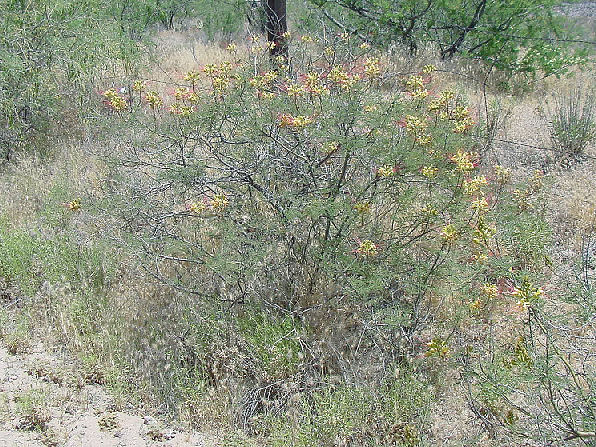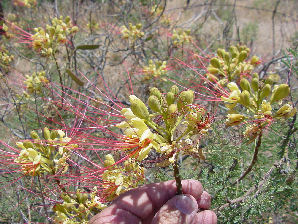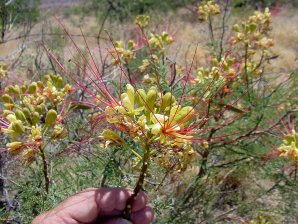Arizona Wild Flowers
Pictures, Photos, Images
Descriptions, Information, Reviews.
Yellow Bird Of Paradise, Caesalpinia gilliesii.
We Are Proud Of Our SafeSurf Rating!
Click On Any Of The Following Links By Amazon.Com
For Books, & Videos About Wildflowers Of Arizona & The Southwest USA. No Obligation!
 |
| Yellow Bird Of Paradise, Caesalpinia gilliesii. Photo June 13, 2003. Date Creek, Arizona. |
|---|
 |  |
| Yellow Bird Of Paradise. Caesalpinia gilliesii. | Yellow Bird Of Paradise. Caesalpinia gilliesii. |
|---|
 /
/

Yellow Bird Of Paradise.
We wish to thank Wikipedia, the free encyclopedia for some of the information on this page. We share images and information with Wikipedia. A large irregular shrub which can be trained to become a small deciduous tree. It may become an evergreen in warmer areas. Attracts hummingbirds.
Quick Notes:
Height: Up To 5 - 10 feet tall, they spread out 4 -6 feet wide.
Stems/Trunks: Greenish stems, noticeable lenticils, spineless; a slender trunk if any.
Fruit: Tan fuzzy pod, dehiscent, curled, persistent on branches unless removed.
Flowers: The flowers are on branch terminals, informal racine of solid yellow flowers with long red stamens; they bloom mainly in the spring and early summer, then sporadically; 4 - 5 inches long.
Flowering Time: March - September.
Leaves: Bipinnately compound leaf. With 6 to 12 pairs of pinnae and 5 to 10 pairs of leaflets.
Found: The USDA claims Caesalpinia gilliesii is native of the USA (AZ, CA, GA, NM, NV, OK, TX, UT), USA+ (PR). In Arizona it is native of all counties except La Paz, Yuma, Navajo, Apache, & Greenlee counties. It is also natiuralized in many parts of Mexico & Australia. It is native of many parts of South America. Peru, Argentina, Chile; & Uruguay.
Hardiness:
Soil pH requirements:
Sun Exposure:
Elevation: 0 Feet - 5,000 Feet.
Habitat: Alkaline, Chalky/alkaline, Dry, Sandy, Well-drained/light soils, sandy washes. An ideal xeriscape landscape plant in Arizona.
Miscellaneous: Flowering Photos Taken June 13, 2003. Hawkins Ranch, Near Date Creek, Arizona.
|



We Are Proud Of Our SafeSurf Rating!
Click On Any Of The Following Links By Amazon.Com
For Books, & Videos About Xerioscape Plants Of Arizona & The Southwest USA. No Obligation!
Back To Arizona Wild Flowers Home Page.
Back To Arizona Wild Flowers; Yellow Flowers Page Nine.
Back To Arizona Xeriscape Landscaping Main Page.
Back To Xeriscape Shrubs Page Two.
Back To DeLange Home Page
© 1966 - Present, Audrey, Eve, & George DeLange
| © 1966 - Present, Audrey, Eve, & George DeLange |


